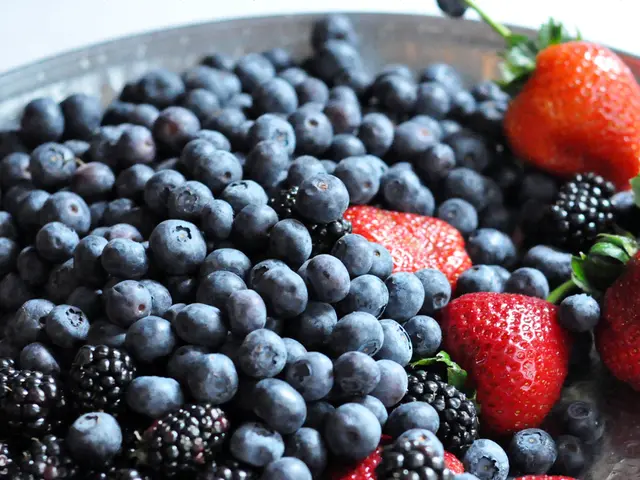Gaza's Malnutrition Crisis: UNICEF Rings Alarm Bell for Future Generations
Rising Issues of Childhood Malnutrition in Gaza
Social Media Sharing: 🔄📡️🔥 Tweet | Facebook ⚡️💌 Email | 📄📝 Print | 🔗🔌 Copy Link
The humanitarian crisis in Gaza is spiraling out of control, as reported by UNICEF. The children of Gaza are bearing the brunt of this catastrophe, with malnutrition and poor sanitation being the primary concerns. Last month alone, a staggering 5,119 children aged between six months and five years in the beleaguered coastal strip – ravaged by 20 months of conflict – required emergency treatment for acute malnutrition.[1] This represents a whopping 50% increase from the month prior.
636 little infants are grappling with severe acute malnutrition, the most critical form of malnutrition. They urgently need immediate, life-saving assistance, but obtaining clean water, medical care, and appropriate treatment facilities remain scarce in Gaza.[1]
"Between the start of the year and the end of May, a whopping 16,736 children required treatment for malnutrition—equating to an average of 112 children per day," said Edouard Beigbeder, UNICEF's Regional Director for the Middle East and North Africa. [1]
The interconnection between malnutrition and diseases breeds a destructive cycle. Malnourished children are more susceptible to severe illnesses like acute diarrhea. Conversely, acute and prolonged diarrhea intensifies health conditions and culminates in malnutrition.[2]
So, what's UNICEF doing to address this calamity? Well, they've been busy setting up specialized malnutrition treatment centers, conducting child screenings, and providing aid. They've even established nutritional support points in places like Khan Yunis, from which hundreds of children receive direct help.[3] To assist families in accessing food and essential medicines, UNICEF hands out multipurpose cash assistance.[3]
Water, sanitation, and hygiene (WASH) services are crucial in this high-risk environment, given the link between malnutrition and waterborne diseases. UNICEF is working to safeguard water and sanitation infrastructure, providing safe drinking water to around 1.5 million people to prevent disease outbreaks that exacerbate malnutrition.[3][4] Furthermore, to sustain health services operations, UNICEF is attempting to address fuel shortages crucial for running water production and health services essential for malnutrition treatment.[4]
Vaccination and educational services for children are also being implemented to help mitigate broader health impacts associated with malnutrition. Kids are being immunized against diseases like measles, polio, and diphtheria, and they're attending UNICEF-supported temporary learning spaces.[3]
Remarkably, these instances of malnutrition are largely preventable, but blocked aid deliveries, damaged infrastructure, and crippling fuel shortages have caused malnutrition rates to skyrocket.[4] UNICEF warns that without a swift change in circumstances, malnutrition rates will climb to their highest levels since the conflict erupted, leaving malnourished children vulnerable to secondary illnesses like acute diarrhea and hepatitis A.[4]
In conclusion, UNICEF's efforts in Gaza center around direct malnutrition treatment, support for families regarding food and medication access, WASH services to curb disease risk, and sustaining critical health operations amid challenging circumstances.[2][3][4]
Insights:
- Screening and Treatment: UNICEF continues to screen children for malnutrition and provide treatment at specialized malnutrition treatment centers, such as the one in Khan Yunis.[4]
- Nutrition Support Points: To directly assist children, UNICEF has set up nutritional support points.[3]
- Multipurpose Cash Assistance: To help families access food and medicines when available, UNICEF distributes multipurpose cash assistance to families.[3]
- Critical WASH Services: Given the link between malnutrition and waterborne diseases, UNICEF supports water and sanitation infrastructure, including delivering safe drinking water to around 1.5 million people.[4][5]
- Health Services Operations: The conflict has damaged health infrastructure, with only about half of Gaza’s 236 treatment centers still operational.[5] UNICEF faces fuel shortages critical to running water production and health services vital to malnutrition treatment.[5]
- Vaccination and Education Services: Children are being immunized against diseases like measles, polio, and diphtheria, and attending UNICEF-supported temporary learning spaces, helping mitigate broader child health impacts related to malnutrition.[4]
[1] ntv.de, dpa
[2] UNICEF, Management of no longer exclusive breastfeeding in emergencies: A job aid, p20
[3] UNICEF, Progress and Challenges in Addressing Malnutrition in Gaza (Report), p10
[4] UNICEF, Emergency Nutrition Support in Gaza (Factsheet), p2
[5] UNICEF, Ongoing Humanitarian Crisis: Gaza’s Eroding Basic Services and Child Protection (Statement), p3
- The community policy should involve the awareness and implementation of essential health-and-wellness practices, such as proper nutrition and hygiene, to prevent the escalation of malnutrition among the children of Gaza.
- As part of its comprehensive response to the malnutrition crisis in Gaza, UNICEF could consider incorporating science-based health and nutrition interventions into its employment policy, to ensure the most effective and evidence-based support for the children in need.







